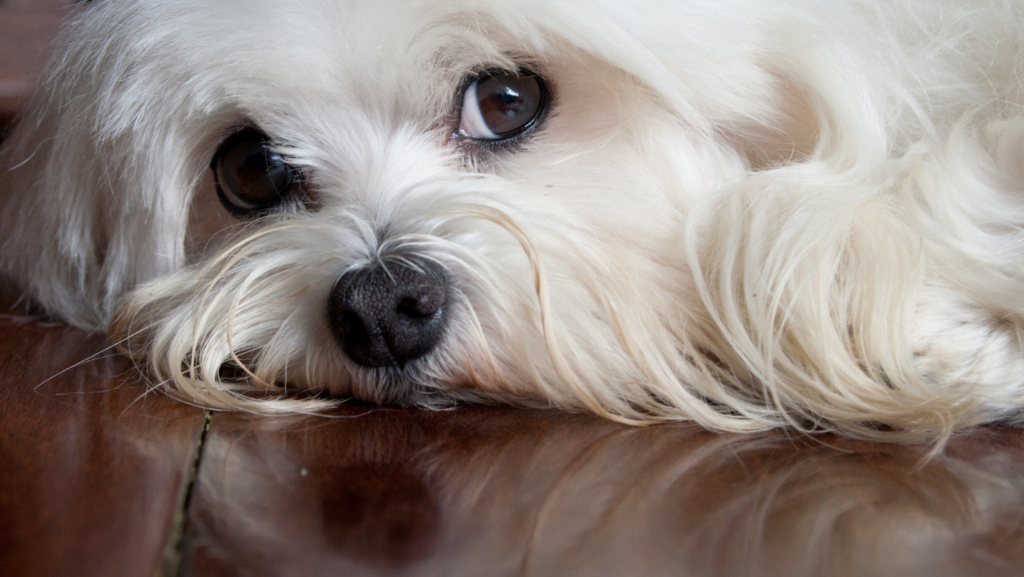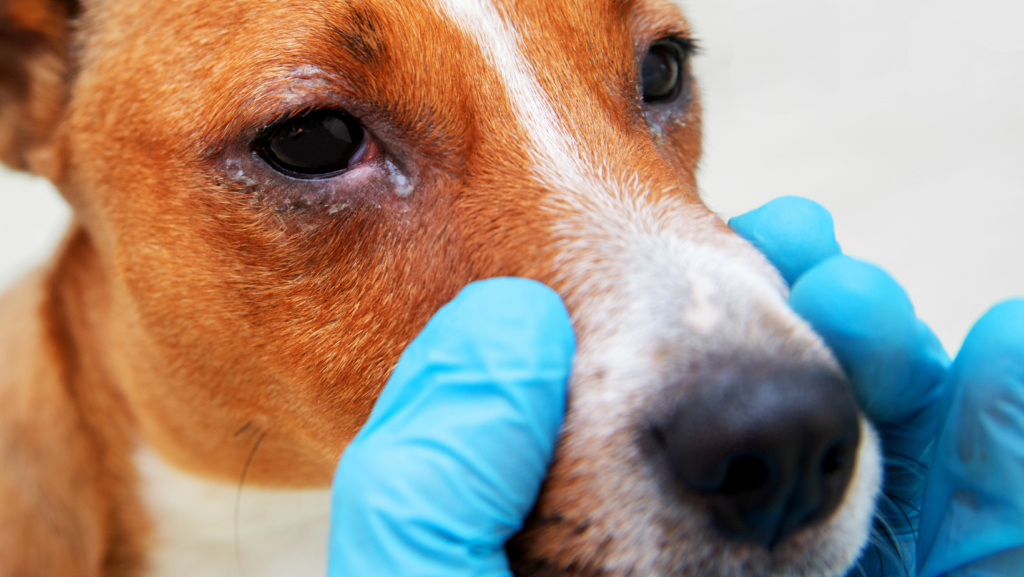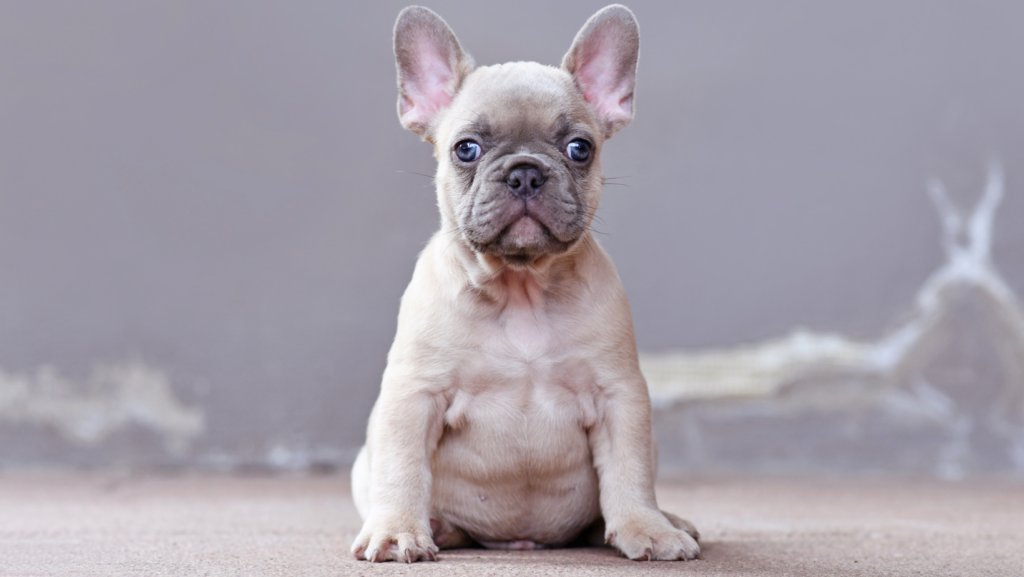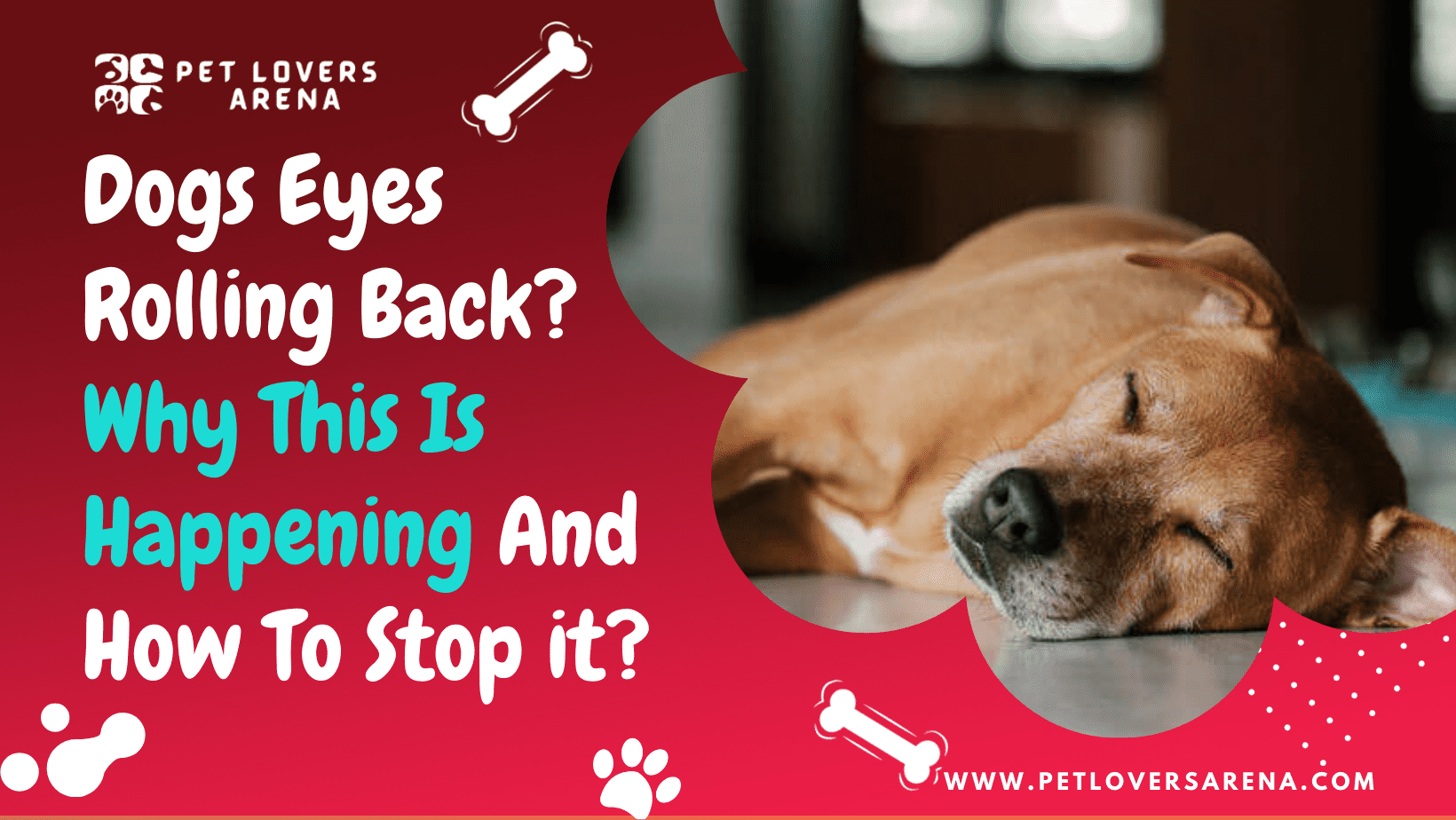For all dog owners, the good health of their dog is always the top priority, but some sites have always managed to terrify the dog owners. Your dog’s eyes rolling back is one such problem that leaves the dog’s owner terrified. The funny yet scary thing is that your dog seems as if it is possessed.
Dogs eyes rolling back is not always a sign of something scary or a terrible situation. There are many reasons why your dog rolls its eyes back, and it can be harmful or harmless. Although it is not always an issue, if a dog rolls its eyes back continuously, it can be an alarming sign sometimes. Immediately consult your dog’s vet if this condition of rolling of the dog’s eyes doesn’t seem to stop in your dog. This article will help you understand the possible reasons why the issue of rolling back of a dog’s eyes is happening and provide you with treatment measures to stop it.
Reasons Behind Dogs Eyes Rolling Back

A dog’s eyes rolling back can be a symptom of some underlying harmful medical condition or a danger to your dog’s health. Finding the main reason behind your dog’s rolling back of the eye is not easy. Proper medical help will help you identify the exact reason. So a visit to the veterinarian is a must. Here are some possible reasons why your dog is rolling its eyes that you need to look after it to help your dog recover quickly.
1. Eye injury
Dogs have a third eyelid, and this eyelid shows up when your dog has an eye injury. This eye injury can be inflammation in a dog’s eye, a scratch, a wound, or any other issue. Sometimes due to injury in the cornea, excessive pain occurs that causes dogs to roll back their eyes.
Whenever a third eye appears in the dog, it rolls back its eyes. But the advice is to check your dog’s eye for any injury. Some injuries are not visible to the naked eye of the owner, so you are advised to consult your dog’s veterinarian for that. Proper medical treatment is what your dog needs if your dog is suffering from any eye injury.
2. Nystagmus
The sensory system provides balance to the dog’s head and body. When there is a problem in the sensory system in dogs, it causes involuntary movement of the eye. The involuntary eye movement in dogs is known as “Nystagmus.”
Nystagmus further gets divided into two types: Jerk Nystagmus and Pendular Nystagmus.
Jerk Nystagmus: Jerk Nystagmus is more common in dogs than Pendulum Nystagmus. In Jerk Nystagmus, the dog’s eye first moves slowly in one direction and then suddenly jerks in another direction.
Pendular Nystagmus: In Pendular Nystagmus, dogs’ eyes move in one direction and then slowly in the other direction. The dog’s eyes move back and forth. Pendular Nystagmus is less common in dogs.
Other Signs and Symptoms of Nystagmus
Besides the slow or fast rolling of eyes, you will notice a tilt in your dog’s head or a circular movement of the dog’s head. This tilting or circular motion is because the dog’s head is trying to keep pace with what its eyes see.
Nystagmus in dogs can be genetic or develop over time. There are many reasons for developing Nystagmus in dogs, and Hypothyroidism, tumors, and exposure to various toxins are some of the main reasons. Depending on your dog’s age, you can provide your dog with medications as the vet suggests.
3. Tumors are plaguing the dog

If your dog has developed tumors, you will notice he is rolling his eyes backward frequently. Tumors affect the neurological system of your dog’s body, and this can further cause many health problems in your dog.
It would be best if you never confused tumors with cysts. Cysts in dogs are harmless, but tumors are not. Tumors result in an abnormal growth in the dog’s eyelids, causing them to roll their eyes backward. Cysts are located under the skin and can be the reason for abnormal eye movement that your dog shows.
Cysts do not have any connection with cancer, but tumors can lead to the formation of cysts. If you find any swelling or abnormal growth in your dog’s eyelid or near your dog’s eye, book an immediate appointment with your dog’s veterinarian.
Read More: Why Does My Dog Avoid Eye Contact
4. Medications
Have you recently started giving your dog any medication? There exist certain medications whose side effects can also cause your dog to roll back its eyes. The medications having such side effects are mostly painkillers, tranquilizers, etc.
If your dog has recently been put on some tranquilizers or painkillers by your dog’s veterinarian, there are high chances that your dog will roll back its eyes. The main reason is the side affects such medicines, mainly painkillers, cause in your dog.
Before your dog’s veterinarian prescribes any medicine, show the veterinarian your dog’s proper medical history. Before prescribing any medicine to your dog, the vet will inform you about its side effects. However, before giving any medication to your dog, make sure to research the side effects and choose the medication with the fewest side effects.
If your dog is on any medication, try to look for the side effects. Some medications make your dog tired. Taking care of your dog and giving your dog medicines with the fewest side effects is always preferable.
5. Seizures
Seizures are abnormal conditions that affect a certain part of your dog’s brain. The effect on your brain will cause your dog to behave abnormally. For example, your dog will lose consciousness or stop moving certain parts of its body. The body parts that stop moving depend upon the brain part that is affected due to the seizure.
Contrary to what many people believe about a dog’s condition in seizures of suffocation, your dog faces some other issues. If your dog suffers from seizures, he starts to panic and become anxious. At such a time, if you put your hand in your dog’s mouth to prevent suffocation or check if the dog is rolling back its tongue (as believed by many), you might hurt your dog, or your dog could bite you or hurt you. If you try to open their mouth during seizures, the situation gets worse.
Many dogs start wailing the night before seizures. Some signs show in dogs for 24 hours, while others are only available for a few hours before a seizure attack. There can be many reasons for seizures in dogs. Seizures include past trauma, infections, epilepsy, and the ingestion of harmful toxins.
If your dog is suffering from seizures, you will notice him drooling excessively and not affecting his tongue.
Once, let the seizures finish and then provide your dog with medications; if your dog is on any medications, take them to the veterinarian. If your dog has faced seizures for the first time, let it finish first and then immediately take your dog to the veterinarian.
It is okay to provide your dog with medications for seizures as per veterinarian advice, but the most important thing is to get to the root cause and finish it. Finding the root cause and eradicating it will help your dog not face such a situation in the future.
6. Strokes

When the blood supply to a dog’s brain suddenly stops, it results in your dog’s rolling back of its eyes. Stroke is one of the most serious health conditions that require immediate medical help.
Strokes can further be of two types: ischemic strokes and hemorrhagic strokes.
Ischemic strokes: Ischemic strokes occur in a dog’s body when there is an obstruction in the blood vessels.
Hemorrhagic strokes: Hemorrhagic strokes occur when suddenly a blood vessel in a dog’s body ruptures.
Strokes are more common in older dogs as compared to younger ones. However, healthy dogs too can have strokes.
You cannot predict a stroke in your dog beforehand; it can occur unexpectedly. In addition, your dog shows no warning signs that indicate your dog will be having seizures. It can even happen to a healthy dog during playtime. Therefore, it would be best to be very careful about your dog’s health and take your dog for regular checkups.
If your dog has suffered from a stroke, immediately seek medical help. Medical help provided by a veterinarian will help your dog recover at a fast rate. A dog’s recovery from seizures is possible if the dog gets medical help on time. In addition, the dog should follow proper treatment procedures, as the veterinarian suggests, including all medications, to decrease the risk of strokes happening again.
7. Vestibular disease
The location of the vestibular system is in the dog’s brain, but some parts are in the middle or inner ear. The vestibular system is responsible for maintaining balance in your dog’s body.
Many times, there are infections in the inner ear or middle ear of your dog called vestibular disease. The vestibular disease causes many problems in your dog, and the symptoms are the same as those of Nystagmus. Vestibular diseases are also one of the reasons why your dog starts rolling back its eyes.
Other than common symptoms, If you notice your dog having issues with the maintenance of balance in its body, Then there are high chances that the reason for your dog’s rolling back its eyes is vestibular disease.
Dogs with vestibular diseases will lose balance and face trouble while walking or getting up. In all, you will feel as if your dog is drunk.
The only reason for vestibular disease is not infections. Hypothyroidism, injuries, and tumors are also some of the reasons for vestibular disease. Sometimes it becomes difficult to find the exact reason behind the vestibular diseases in your dog so consult a veterinarian at that time.
If you find and identify vestibular disease in your dog at a time, immediately take your dog to the veterinarian. A day or two is critical for your dog’s recovery from vestibular disease. But if you manage to take your dog to the vet on time, there are high chances your dog will recover in a week or two.
Sometimes, the vestibular disease has major symptoms requiring you to hospitalize your dog immediately before the situation worsens.
8. Dogs with only one eye rolled back
If you notice your dog rolling back its one eye, it may not be as dangerous as you think it to be. A dog’s rolling back one eye can be because of your dog’s third eyelid.
The third eyelid is also called a nictitating membrane. The nictitating membrane or the third eyelid covers the dogs’ eyes. You will notice this membrane only when your dog sleeps or when you wake your dog abruptly from sleep.
The third eyelid, or the nictitating membranes, serves as the first line of defense in dogs. This membrane protects any debris or infections from entering the dog’s eyes. The nictitating membrane acts as a shield for the dog’s eyes. The third eyelid in your dog’s color is white. The third eyelid itself is 40% of the cause of tears in your dog.
Not only dogs but many other animals also have problems with the third eyelid. Some of these problems are genetic, while some result from different lifestyles or other factors in these animals. The third eyelid is the first line of defense, so it is the first to get affected by infections in the eyes.
9. Strabismus

Strabismus is one of the main reasons dogs roll back their eyes. Strabismus in dogs is much like Strabismus in humans. However, there is a problem with eye movement in Strabismus in dogs. The eye movement shows a problem because the eye muscles cannot work properly. The problems with the eye muscles are due to the brain’s inability to function and control the eye muscles.
It is extremely necessary to know the reason behind Strabismus. Sometimes, for Strabismus, your dog doesn’t need any treatment. But other times, if it causes your dog’s eyes to roll back, it requires you to visit a veterinarian immediately.
In some dogs, Strabismus is hereditary, while in some particular breeds of dogs, Strabismus is considered a desirable trait.
Strabismus can also result from vestibular disease, head injury, tumors, etc. Strabismus is most common in old dogs. Strabismus is a cosmetic disease that mostly doesn’t cause pain or discomfort in dogs. Many times, it doesn’t have any side effects. Sometimes dogs with Strabismus are loved as they look extremely funny and cute.
10. Cherry eye
One of the most common health problems of the third eyelid, or nictitating membrane, occurs when the third eyelid gland prolapses.
Cherry eye disease is most common in puppies or dogs under two years. The most prone to cherry eye disease are dogs other than animals. Therefore, dogs with nictitating membranes and prolapse should get closely observed.
Out of all dog breeds, the most prone to the cherry eye include golden retrievers, beagles, bulldogs, pugs, crockery spaniels, and others.
Scientists are still finding out whether the common cherry eye in dogs is genetic or not. However, a vet, after closely examining your dog’s nictitating membrane, can identify if your dog is suffering from red cherry disease or not.
Your dog will suffer from problems if the nictitating membrane gets harmed. Out of all, if there is a problem with the nictitating membrane during production tears, it will lead to dry eyes in your dog.
With manipulations and massages, you can easily treat your dog suffering from a cherry disease. Other than that, give your dog proper medications, and follow a proper course of medications as suggested by the veterinarian.
If you don’t think your dog is getting relief after this, Your dog may need immediate surgery and have the glands on their third eyelids immediately replaced or removed, as vets suggest.
You May Also Read: Why Do Dogs Lick Other Dogs Eyes?
11. Pain
If your dog is facing pain in any part of its body, this will cause it to roll back its eyes. The pain your dog is facing can be from any injury that is left untreated, or it can be due to pain in internal organs. Sometimes, it becomes difficult to guess the exact reason, so taking the dog to the veterinarian is advisable.
If you notice your dog’s eyes rolling back and symptoms like restlessness, whining, or loss of appetite in your dog, it can be a sign to call the vet. If the dog is pacing back and forth, losing weight, and you are unaware of the reason, drooling excessively, you should go to the vet with your dog.
Your dog needs to be checked properly for pain and injury. If you notice any of the symptoms mentioned above, along with your dog’s eyes rolling back, the cause could be pain. Visit the vet and eradicate the reason for your dog’s pain.
How to Stop Your Dog from Rolling Back its Eyes?
Whenever you notice your dog’s eyes rolling back, the best advice is immediately to take your dog to the nearby vet. Sometimes we regard it as not that serious, but it can be serious and harmful at the same time.
Dog’s veterinarian will try to find abnormalities in dogs and the cause behind these abnormalities that lead to eye-rolling in your dog. However, if you know the exact reason behind the eye roll in your dog, you can provide your dog with proper treatment, and only a vet or medical expert can do this.
Unusual eye movement can be harmless to some extent, but if it continues for a long time, there could be something serious like some serious underlying grave disease. An abnormal eye roll is also an indication of numerous health problems in your dog. These health problems cause negative effects not only on your dog’s mental state but also on the dog’s physical state. Cherry eye, tumors, and strokes are some of the harmful diseases.
Some harmless reasons for dogs rolling back their eyes are due to age, while some are genetic or hereditary. But, at the same time, other reasons can be extremely harmful.
Not only this but sometimes the one you think of, like your dog rolling back its eyes, can be just the third eyelid or nictitating membrane covering your dog’s eyes. You can easily notice the third eye or the nictitating membrane when your dog sleeps or wakes up abruptly.
The best option, or the sanest decision, will always be to take your dog to the veterinarian for immediate medical help. Your dog will recover quickly and easily if you immediately take him to the vet. In addition, your dog’s veterinarian knows better about your dog’s health and disease.
Neglecting these diseases or signs can lead to some grave or more harmful diseases. So be careful of your dog’s health and monitor your dog’s health and movements.
Final Words
There are many reasons for your dog rolling back its eyes. These reasons can be harmless or a sign of some serious disease. The best advice is to take your dog to the veterinarian immediately if you frequently notice your dog rolling its eyes. The reasons vary from harmful diseases like cherry eye, tumors, seizures, and Strabismus to as harmless as hereditary or Strabismus.
Experts always advise taking the dog to the veterinarian whenever an unusual behavior gets observed, especially for a long time. Often, we cannot find the exact reason, but medical experts have experience and can easily diagnose the dog with any harmful disease. Taking care of the dog is the sole responsibility of the owner, and taking him to the vet for regular checkups is also one of them.
Meet John Patterson, an accomplished Dog Trainer and a dedicated advocate for building strong human-canine relationships.With years of experience as a Professional Dog Trainer, John firmly believes that well-trained dogs are a reflection of patient guidance and unwavering care. Beyond his training skills, he finds solace in grooming and playing with dogs, nurturing their physical and emotional well-being.

